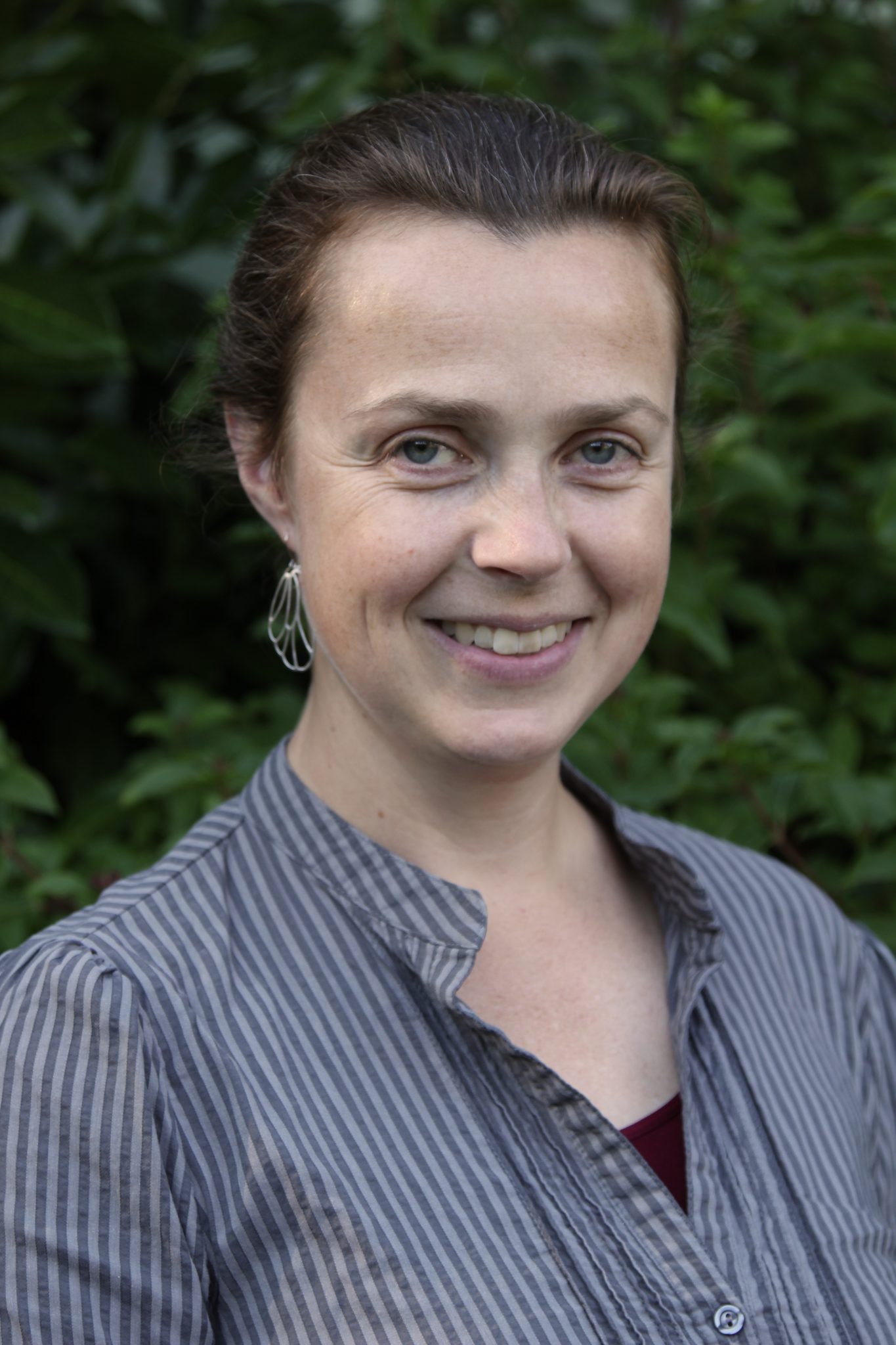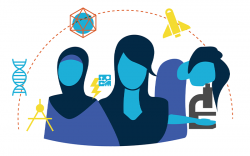Get to know Saskia van Bergen – Green Chemist and Notable Woman in STEM
Saskia van Bergen is a Green Chemist at the Washington State Department of Ecology in the Southwest region of Washington, where she supports product development, product safety, and environmental sustainability. Saskia became a green chemist when she realized that chemists can actually develop safer and more sustainable products—green chemists, not just engineers, can develop solutions to some of the big environmental problems.
What does it mean to be a green chemist?
Green chemistry is all about making chemistry more sustainable for people, planet, and profit. Green chemists work to prevent pollution by creating chemicals that are less toxic, are designed to degrade, use bio-based feedstocks, are designed with less energy, and are designed to generate less waste. By creating and using safer alternatives, workers, consumers, and the environment are protected.
What was your education and/or career path? How did you get where you are now?

I’ve always been interested in the environment and, in high school, I was very interested in chemistry. I think chemistry, ceramics, and field hockey were probably my top three favorite school-related items in high school. But, even though I liked chemistry then, I didn’t really know where I wanted to go with my career. I took all the core requirements for chemistry and majored in it, as I liked it, but it wasn’t like I knew I wanted to be a chemist. I DID know I wanted to study abroad in a program that had marine biology and chemistry, so that gave me a deadline for deciding my major early in my sophomore year, which I think made it an easier decision. In my junior year, I really enjoyed my instrumental methods course as well as one where we identified “unknown” compounds, but even after that I still didn’t see a clear path going forward.
After college, before the internet was widely available, I heard, through word of mouth, about a job at a natural products company that was looking for a quality control chemist. I applied and got it. There I learned a little bit about product formulations, extractions, and natural products. Then, I went and worked at the U.S. Naval Research Lab (NRL), where I performed field trials on a biosensor designed to detect explosives in contaminated groundwater.
While at the NRL, I took classes on the side, because tuition exemption was a benefit of my job, meaning that I could attend classes for free. While there, I talked with one of my professors, who was an environmental chemist, and he introduced me to a group called the Society of Environmental Toxicology and Chemistry (SETAC). He also told me about programs in that field. That’s what led me to the graduate program at UC Davis where I studied in the Agricultural and Environmental Chemistry graduate group. It was a very flexible and interdisciplinary program, which worked well with my personality as it allowed me to explore and hear multiple perspectives. The commonality among the students in the group was applied chemistry, but the students’ research professors were in departments such as civil and environmental engineering, chemistry, toxicology, food science, textiles and soil science. When deciding on schools, I went to where the funding was. While looking for research projects I started working for a professor who was a good mentor. I didn’t research water quality, which is what I initially wanted to work on, but instead worked on a project in air quality.
After grad school, I started working as an analytical chemist at a drinking water/wastewater utility. There I analyzed for a number of toxic chemicals, including flame retardants, in wastewater and sediments. Some of the chemicals we looked for likely came from products in our homes. While working at the utility, I collaborated with a colleague at another organization on our own time. We scanned foam in children’s products as part of a larger project that was assessing the use of a new generation of flame retardants found in products that were starting to replace the ones we were monitoring in the environment. It was around this time that I found out about green chemistry and realized that, rather than monitoring chemicals of concern in the environment, chemists could design safer chemicals and products with their life cycle in mind, which would help avoid unintended consequences. In order to learn more, I completed a certificate in green chemistry while working. Then, the stars aligned. My current job, a newly created position, was posted. The main goal of the position was to mainstream green chemistry in Washington state. They wanted someone with both experience in Green Chemistry and product testing.
So I guess the point of this was that I never knew what I wanted to do, but I continually tried to learn and align my job with my interests. Not having a clear career path could partially have been because the position I am in now didn’t exist when I graduated. From undergrad and even from grad school, it didn’t exist! But at this point in time, it is a great fit for me and many of the skills that I developed getting to here have qualified me for the position
I think it’s important to tell students it’s OK to not know what you want to do. If you don’t have a clear next step, you might want to find jobs that sound interesting and apply. And then you can learn what you like, or don’t like, and optimize from there.
What/who were some of the most important influences that guided you to STEM?
My mother has always been very inquisitive. She wasn’t in STEM and didn’t go to college, so might not be who one would expect to have influenced me to study science, but I think she guided me to STEM and built my curiosity. When I was little and had questions, she supported me in finding answers and in asking new questions.
The influences that guided me to my specific job were the mentors I’ve found through my educational path and through informational interviews.

What is your favorite part of your STEM career?
I really like the range of different activities that I do and the flexibility I have with what I work on, but I think my favorite parts are my collaborators and collaborations. I really enjoy working on projects with others, as we can leverage our strengths and different perspectives to produce a more robust product. Collaborations also help grow the community and resources of an area that I strongly believe in.
What do you consider your most significant achievement in STEM?
A recent achievement that I am proud of is a project that I co-lead developing information on best practices for safer cleaning and disinfecting during COVID-19. We worked with an interdisciplinary group to quickly develop guidance which we then disseminated to various audiences in the US. We have since incorporated it into additional projects and have seen other agencies reference and adopt it.
But, sometimes it’s actually just making a connection between two people who haven’t worked together and then seeing what they produce in collaboration. For instance, I was really happy that one of our startups in Washington received an International award and they wouldn’t have applied if I hadn’t shared info about the opportunity. So, it’s not a huge effort on my part, but it ends up making an impact. Minor efforts on your part can make a big difference to others.
Are there any stereotypes in STEM you’d like to personally dispel?
Rather than dispelling a stereotype, I’d prefer to give advice. You are an individual…how does a broad generalization that is very likely inaccurate apply to you? I try hard to ignore stereotypes as they are usually both unproductive and inaccurate.
What would you like to say to young women thinking about beginning a career in STEM?
Do it! If you are interested and if it excites you, do it.
It can be easy to be intimidated when thinking about your entire career, but you just need to start somewhere. If you’re intrigued by a career in STEM, talk to people in the field to learn more about the subject and work to see if you want to try it.
Remember, you can always make changes. You don’t like something? Figure out what you DO like about what you are doing and try to keep finding that element in future things that you do. Continue to talk to others in the fields interest you and ask them for ideas for next steps in your career as well as skills you should develop (or better market). You’re not committed or stuck with whatever you choose. You can always make changes.
How do you see science, technology, engineering, and/or math working together in your current job?
My main role is to try to increase the awareness and adoption of green chemistry. In order to do this, we need to look at the larger system. For Science, it’s trying to create safer chemicals and chemical processes, as well as teach the next generation of scientists green chemistry. And we need technology in order to help design and assess these innovations. Engineering allows us to scale up the production and optimize the cost as well as test the performance of these innovations. And math is needed for all of these, in addition to its role in economics.
What do you think is unique about Washington and the STEM careers in our state?
We have such a wide range of industries in Washington (from farming, biotech, and outdoor apparel, to aerospace) that have positions where STEM skills are needed, but we don’t have enough students with the skills to fill those jobs. I am not sure if that’s a unique opportunity, but it is a wonderful position to be in if you are interested in STEM.
What other interests do you have outside of STEM that might surprise people?
It might not be that surprising, but an activity that I really enjoy outside of STEM is kayaking in the Puget Sound. Earlier this year, we had the fairly unique experience of a gray whale swimming past our boats in the Hood Canal!